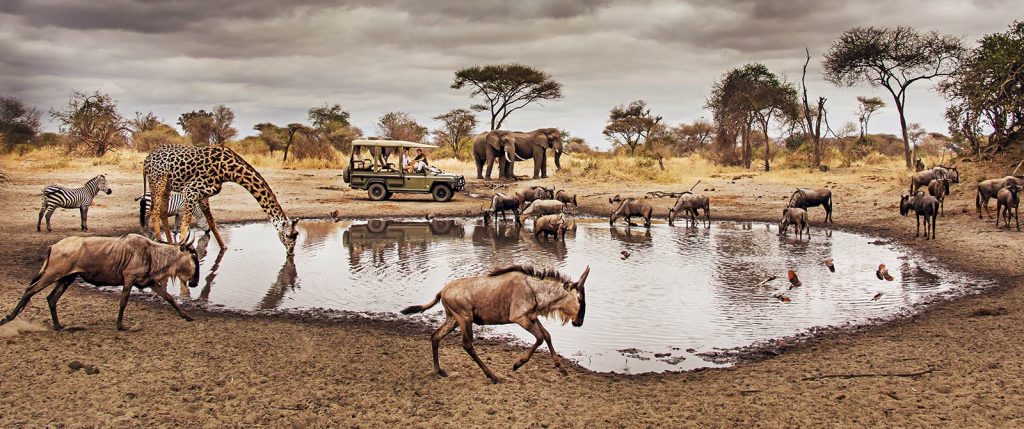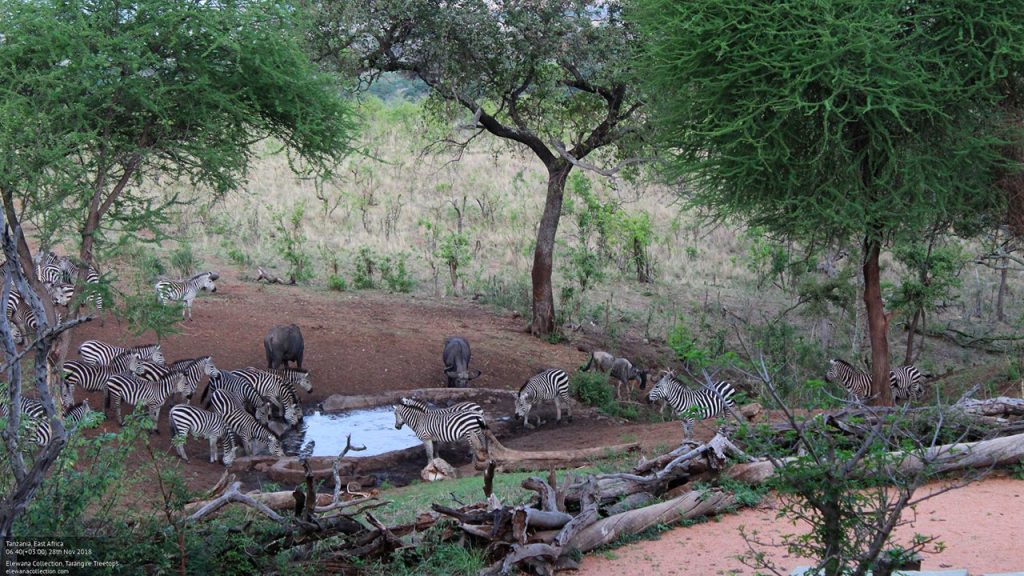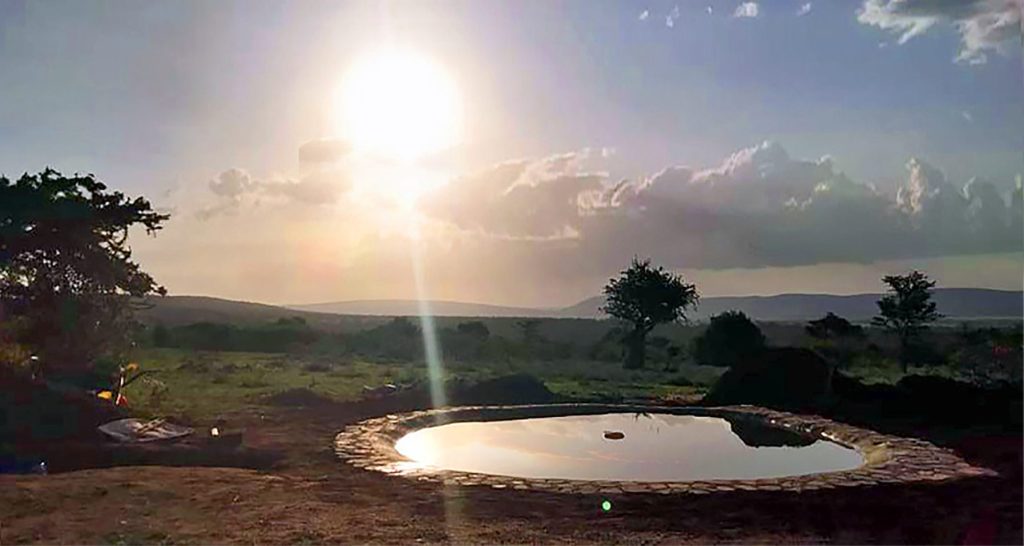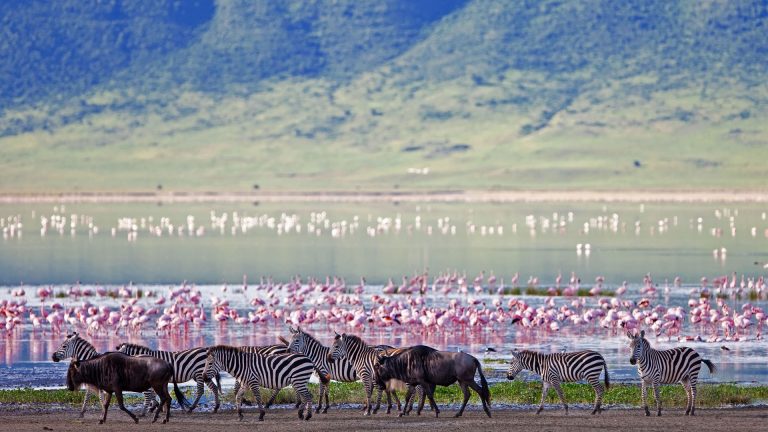The Life-Giving Waterholes of Tarangire National Park




Tarangire National Park, located in northern Tanzania, is a haven for wildlife enthusiasts, known for its vast landscapes, diverse ecosystems, and incredible animal migrations. One of the most crucial features of the park is its waterholes. These natural watering points play a vital role in sustaining the park’s ecosystems and supporting the wildlife that inhabits the area. The waterholes of Tarangire are essential not only to the animals but also to the survival of the park’s unique biodiversity, especially during the dry season when water becomes scarce across the region.
1. The Role of Waterholes in Tarangire National Park
Waterholes are natural or man-made depressions where animals gather to drink water. In Tarangire, these water sources are scattered throughout the park and serve as vital lifelines for wildlife, particularly during the dry season when rivers and other water sources may dwindle or dry up entirely. The waterholes of Tarangire serve multiple purposes:
- Water Source for Wildlife: During the dry months, Tarangire’s waterholes become the primary source of water for the park’s diverse wildlife, including elephants, lions, zebras, wildebeest, and various bird species.
- Social Hubs for Wildlife: These waterholes are not just about drinking; they serve as social hubs where animals interact with one another. Herds of elephants, prides of lions, and large groups of wildebeest often converge at the waterholes, providing a unique opportunity for wildlife watchers.
- Ecological Importance: Waterholes help maintain the health of the park’s ecosystems by supporting plant and animal life that depends on water to thrive. As a result, these waterholes attract numerous species, creating a dynamic food web and contributing to the biodiversity of Tarangire.
2. Famous Waterholes of Tarangire National Park
Tarangire National Park is dotted with several key waterholes, each providing unique experiences for both wildlife and visitors. Some of the most notable waterholes of Tarangire include:
1. Ol Tukai Waterhole
Ol Tukai is one of the most famous waterholes in the park, located near the park’s main entrance. It is a central gathering point for large herds of elephants, who often frequent this waterhole, especially during the dry season. The sight of elephants bathing and playing in the water is a favorite spectacle for tourists.
Wildlife Spotting:
- Elephants: Large herds of elephants regularly visit Ol Tukai, particularly in the late afternoon.
- Birdlife: The waterhole is also a great place for birdwatching, with species like the sacred ibis, yellow-billed stork, and various waterfowl frequently seen here.
- Predators: Lions and leopards sometimes use the waterhole as a vantage point for spotting prey.
2. Silale Swamp
Located on the eastern side of Tarangire, the Silale Swamp is another important waterhole. During the dry season, it becomes a critical water source for many species of wildlife. The area around the swamp is flat and often covered in tall grasses, making it a great spot for observing both predators and prey.
Wildlife Spotting:
- Buffalo and Wildebeest: Large herds of buffalo and wildebeest gather around Silale Swamp to drink.
- Predators: Lions and hyenas often patrol the area, hunting the herds that frequent the swamp.
- Birdlife: The swamp is a sanctuary for various waterbirds, including the African jacana and the wattled crane.
3. Tarangire River
The Tarangire River flows through the park, providing a continuous water source, especially during the dry season. While it is not technically a waterhole, it acts as one of the primary water sources for the park, attracting large numbers of animals.
Wildlife Spotting:
- Elephants and Giraffes: Both elephants and giraffes are commonly seen drinking from the river.
- Crocodiles: The river is home to large crocodiles, which can often be spotted basking along the banks.
- Large Carnivores: Predators such as lions and leopards can sometimes be seen near the river, waiting to ambush prey that comes to drink.
4. Treetops Waterhole
Near the Tarangire River, the Treetops Waterhole is another great location for wildlife viewing. It is particularly popular for watching elephants, who are often observed interacting with one another in the water. This waterhole is surrounded by acacia trees, creating a picturesque and tranquil environment.
Wildlife Spotting:
- Elephants: A frequent site of elephant herds drinking, bathing, and interacting.
- Impala and Zebras: These animals are also often seen drinking from the waterhole and grazing nearby.
- Birdlife: The surrounding trees attract various bird species, including hornbills and the occasional kestrel.
3. Waterholes During the Dry Season: A Magnet for Wildlife
The waterholes of Tarangire are especially crucial during the park’s dry season, which runs from June to October. During this time, the availability of water becomes limited, and animals must congregate around the remaining water sources. This creates a fascinating dynamic, where different species often converge at the same waterholes, leading to dramatic moments of wildlife interaction.
Key Features of the Dry Season Waterhole Experience:
- Increased Wildlife Activity: As water becomes scarcer, the waterholes are often crowded with a variety of species, providing unparalleled wildlife viewing opportunities.
- Predator-Prey Interactions: The dry season’s limited water sources make the waterholes prime hunting grounds for predators. Lions, leopards, and hyenas often lie in wait to ambush animals coming to drink.
- Migration: Some migratory species, like the zebra, may also pass through Tarangire, stopping at the waterholes on their way to other areas in search of food and water.
4. The Role of Waterholes in Conservation
Waterholes are not just important for tourism; they are essential for the conservation of wildlife in Tarangire. The management and protection of these waterholes ensure that the park remains a safe haven for its diverse wildlife populations. Some waterholes are maintained by park authorities to ensure a constant water supply during critical periods, particularly in the dry season.
Conservation Efforts Around Waterholes:
- Sustainable Management: Efforts are made to manage the waterholes sustainably to prevent overuse and maintain water quality.
- Anti-Poaching Measures: Waterholes can also be hotspots for illegal poaching. Park authorities monitor waterholes closely to prevent poaching and ensure the safety of animals that come to drink.
- Wildlife Monitoring: Waterholes are used as key locations for monitoring wildlife populations, including tracking migratory patterns and population health.
5. How to Experience the Waterholes of Tarangire
For visitors to Tarangire National Park, exploring the waterholes of Tarangire provides a chance to witness some of Africa’s most incredible wildlife moments. Whether you’re on a guided safari or exploring the park independently, here’s how to make the most of the waterholes experience:
- Safari Game Drives: The best way to see wildlife around the waterholes is by going on a game drive, either in the morning or late afternoon when animals are most active.
- Stay at a Lodge with Waterhole Views: Some lodges in Tarangire offer rooms or viewing platforms that overlook the park’s waterholes, allowing guests to watch wildlife come and go.
- Guided Tours: A knowledgeable guide can enhance your experience by providing insights into the behavior of the animals at the waterholes and the role these areas play in the ecosystem.
6. Conclusion
The waterholes of Tarangire are not only lifelines for wildlife in the park, but they also offer incredible opportunities for visitors to witness Africa’s natural beauty and the incredible interactions between species. Whether you’re watching elephants gather in the early morning light or seeing predators stalk their prey, the waterholes of Tarangire are a must-see for any safari enthusiast. These vital water sources contribute to the survival of the park’s diverse wildlife, playing an essential role in conservation efforts and ensuring that Tarangire remains one of Tanzania’s most spectacular safari destinations.


One Comment